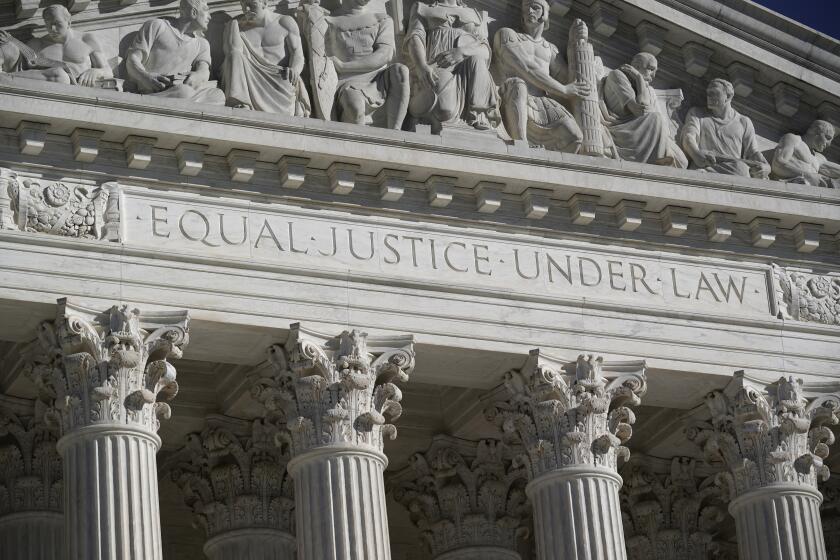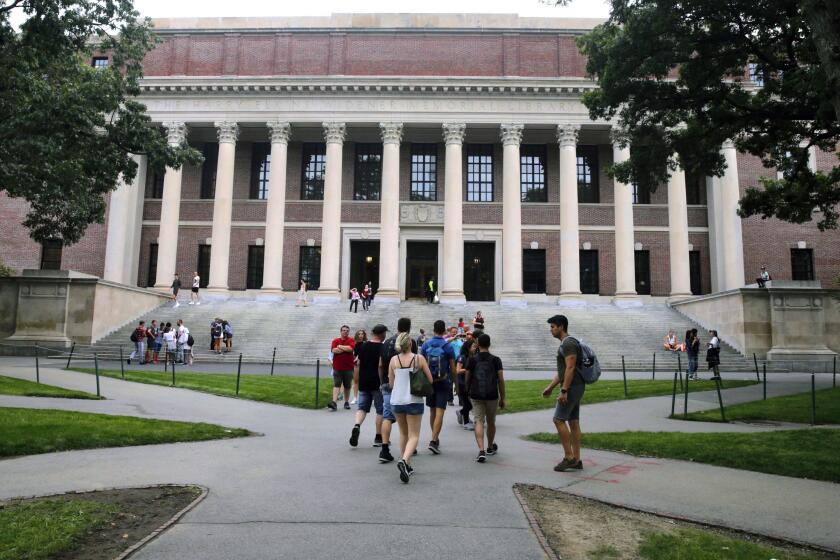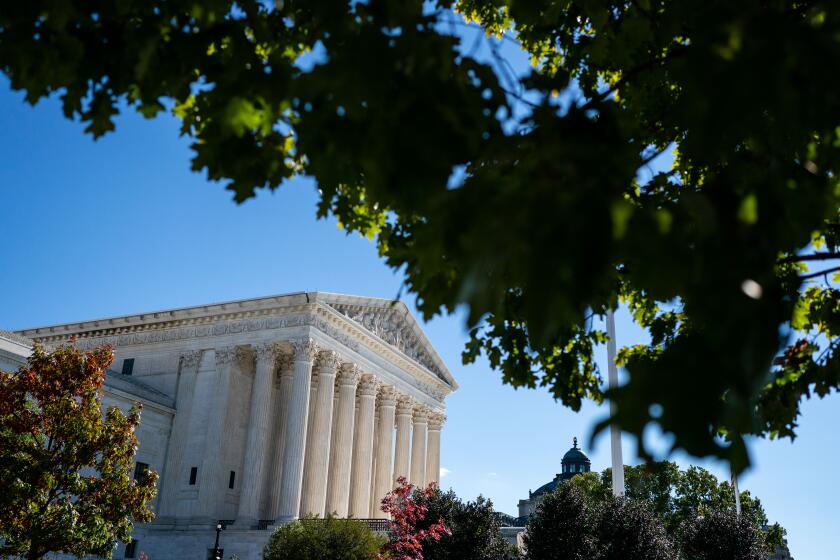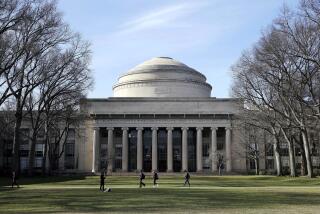The Supreme Court will end affirmative action. What happens next?
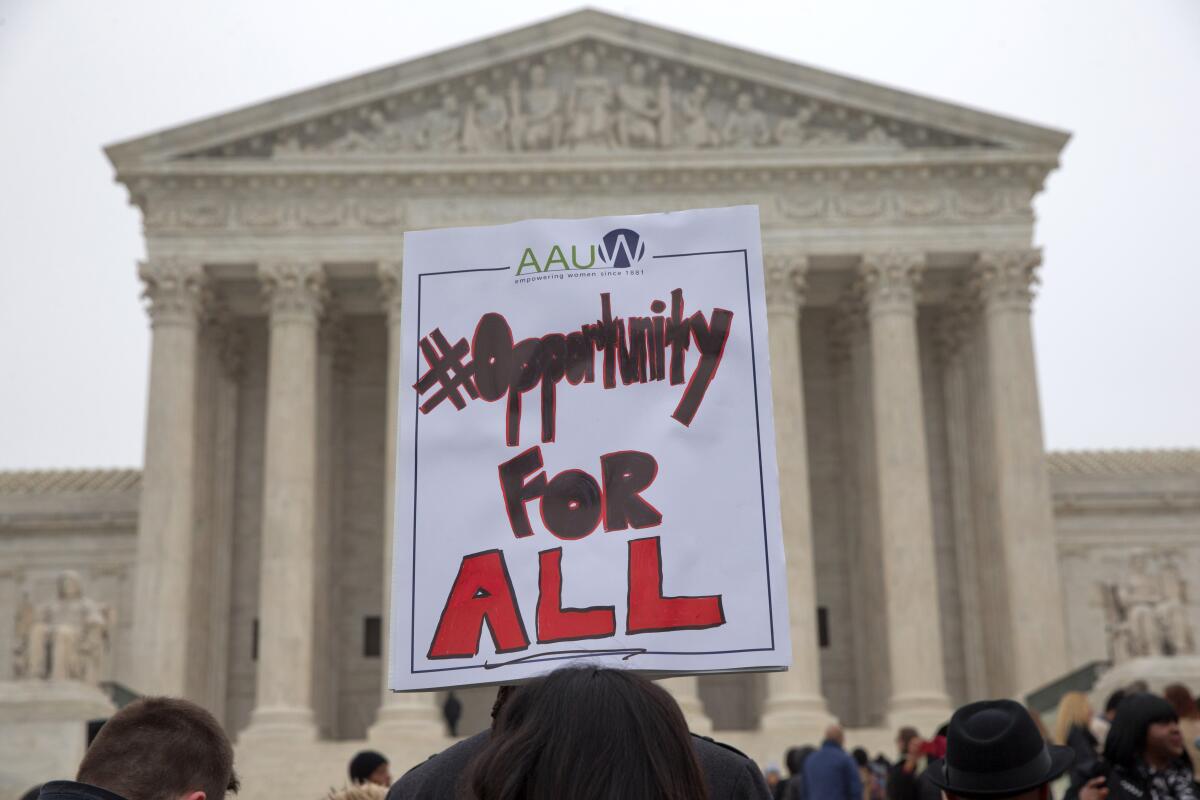
- Share via
On Oct. 31, the Supreme Court will hear arguments in a pair of cases challenging a practice long loathed by the conservative establishment: affirmative action in higher education admissions. Given the 6-to-3 conservative supermajority on the court, there is little doubt how these cases will turn out. Affirmative action’s days are numbered.
Equity and diversity advocates will mourn this outcome, and understandably so. As California’s experience with Proposition 209 demonstrates, when colleges cannot take race into account, they struggle to assemble diverse student bodies. At both UCLA and UC Berkeley, for example, the percentages of African American and Latino students in the freshman class dropped by roughly half in the year after Proposition 209 went into effect in the late 1990s. Even today, both groups’ undergraduate UC enrollment remains significantly lower than their relative share of California’s graduating high school seniors.
Outlawing race-conscious admissions nationwide will deepen educational inequality, and it will have social costs, too. As Thurgood Marshall once argued, “Unless our children begin to learn together, there is little hope that our people will ever learn to live together.”
The Supreme Court takes on affirmative action, and its conservative justices may be ready to forbid race as a factor in admissions to universities.
But the work continues. Supporters of affirmative action must turn their attention to what comes next.
There will be an instinct to respond small, by tinkering with university admissions policies once race can no longer be considered. That would be a mistake. Equity advocates should go big, aiming at the root causes of educational inequality.
Not that there isn’t low-hanging fruit in the admissions process. For example, colleges should eliminate alumni and donor preferences, which disproportionately benefit the most privileged applicants. My children might appreciate a “legacy” boost, but they would have done nothing to deserve it. Colleges should also provide greater preference to applicants from low-income backgrounds in light of the strong correlation between race and wealth.
Sadly, these options will not preserve, let alone improve on, current levels of diversity. In one of the cases now before the Supreme Court, the challengers introduced evidence of what Harvard University’s incoming class would look like if the school were to stop considering race after eliminating alumni and donor preferences and giving preference to low-income applicants. The result? African American student enrollment would decline by 32%.
All of this underscores a deeper truth: Tweaking university admissions policies is a woefully inadequate response to America’s uneven educational playing field. To make progress against that problem, advocates must confront the staggering disparities in the American K-12 education system.
If the Supreme Court ends the program, first-generation students like me will continue to face inequities when it comes to higher education.
When I was a public school teacher in St. Louis, I witnessed every day how children from all racial and socioeconomic backgrounds could learn and excel when properly supported at school. Yet, I also saw how that support was too often lacking in schools serving poor kids and kids of color.
Many disadvantaged students don’t have access to resources as basic as books. In the middle school where I taught, classrooms had only a single set of textbooks, meaning teachers could not assign meaningful homework. There was no library.
School facilities in poorer neighborhoods are also frequently inadequate. The city of Detroit recently admitted, for instance, that not a single one of its public school buildings was in compliance with its health and safety codes.
But the most significant source of K-12 educational inequality by far is a lack of access to high-quality teachers. Studies consistently show that teacher quality is the most critical school variable that affects student outcomes. Yet, the evidence also shows that students of color are far more likely to have low-quality teachers.
In Los Angeles, for example, African American students are 43% more likely to be taught by chronically ineffective teachers than their white peers. For Latino students, the figure is 68%. These unequal teacher assignments go on to generate enormous consequences, reducing minority students’ lifetime earnings, rates of college enrollment and more.
Given these disparities, it is no wonder disadvantaged children find it hard to get into college. To find a lasting solution won’t be easy. We should start by heeding the lessons learned from affirmative action’s demise: We must identify effective policies that do not upset affluent parents.
The common objection to affirmative action is that many privileged parents see it as a zero-sum game, depriving their children of opportunities to which they believe they are entitled. So to be sustainable, any policy response to K-12 educational inequity should probably not disrupt what these parents view (rightly or wrongly) as an entitlement. Busing students away from their neighborhood schools will not fly, and neither will combining districts serving disadvantaged and privileged students.
Race-blind admissions would allow America’s legacy of racism and its effects to carry on, especially in elite colleges and universities.
But there is a policy option, one supported by robust evidence, that would work. If we cannot bring disadvantaged students to schools with great teachers, we can offer financial incentives to encourage the teachers to go to them. A federally funded study conducted in multiple cities and states found that offering bonuses of $20,000 to high-performing elementary teachers who agreed to teach in the lowest-achieving schools produced substantial learning gains — enough to eliminate the Black/white achievement gap in four years.
I call this policy “teachers’ choice.” State and federal lawmakers should bring it to scale. Affluent parents, who may have purchased homes and made career decisions based on specific expectations for where their children will go to school, shouldn’t object because they don’t have such specific expectations about who their children’s future teachers will be. To the contrary, teachers retire and move every year, and parents in many districts don’t find out the identify of their kids’ teachers until days before school begins.
Nor should teachers’ choice draw the ire of teachers’ unions, which may be nervous that incentivizing “the best” teachers will actually mean punishing others. Teachers’ choice punishes no one; it only rewards teachers who voluntarily choose to bring their proven skills to historically underserved classrooms.
Any hopes of saving affirmative action were dashed when Brett M. Kavanaugh and Amy Coney Barrett joined the court. Those justices replaced Anthony M. Kennedy and Ruth Bader Ginsburg, both of whose votes were necessary to uphold race-conscious admissions policies. But we can still make progress on the inequality that plagues our society if we focus on equitably distributing what matters most in our schools — great teachers.
To make teachers’ choice a reality will require a concerted effort from lawmakers and school systems. Its benefits will take time to materialize for students and for the institutions of higher education they would diversify.
But this much is clear: We owe it to our children, and to the American ideal of equality of opportunity, to try.
Aaron Tang is a law professor at UC Davis, a former law clerk to Justice Sonia Sotomayor and a former eighth-grade U.S. history teacher at a charter school in Missouri. @AaronTangLaw
More to Read
A cure for the common opinion
Get thought-provoking perspectives with our weekly newsletter.
You may occasionally receive promotional content from the Los Angeles Times.
